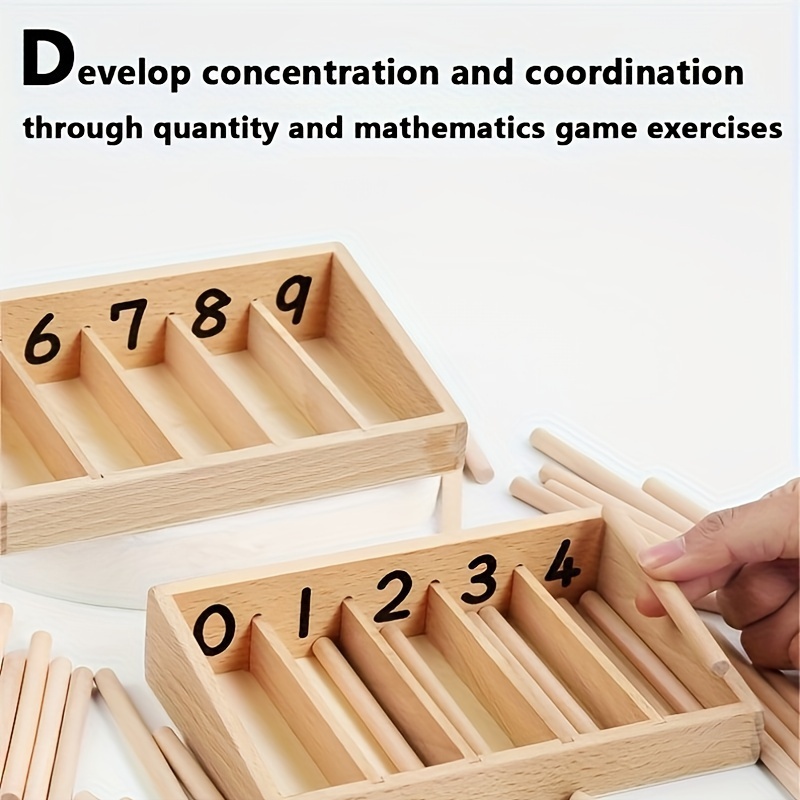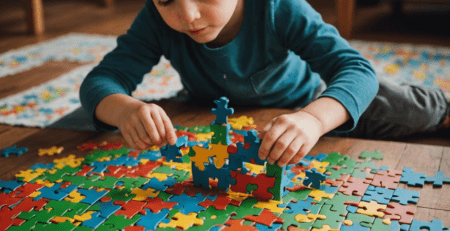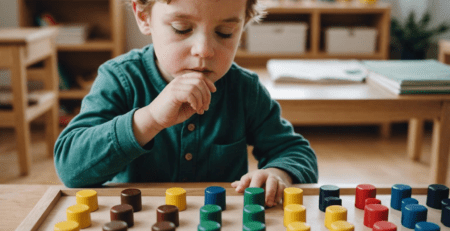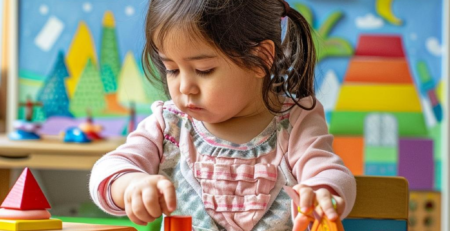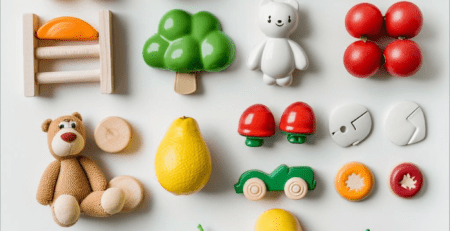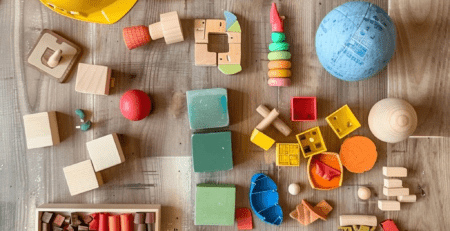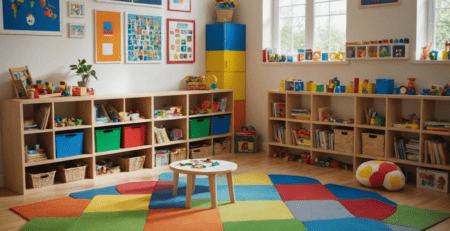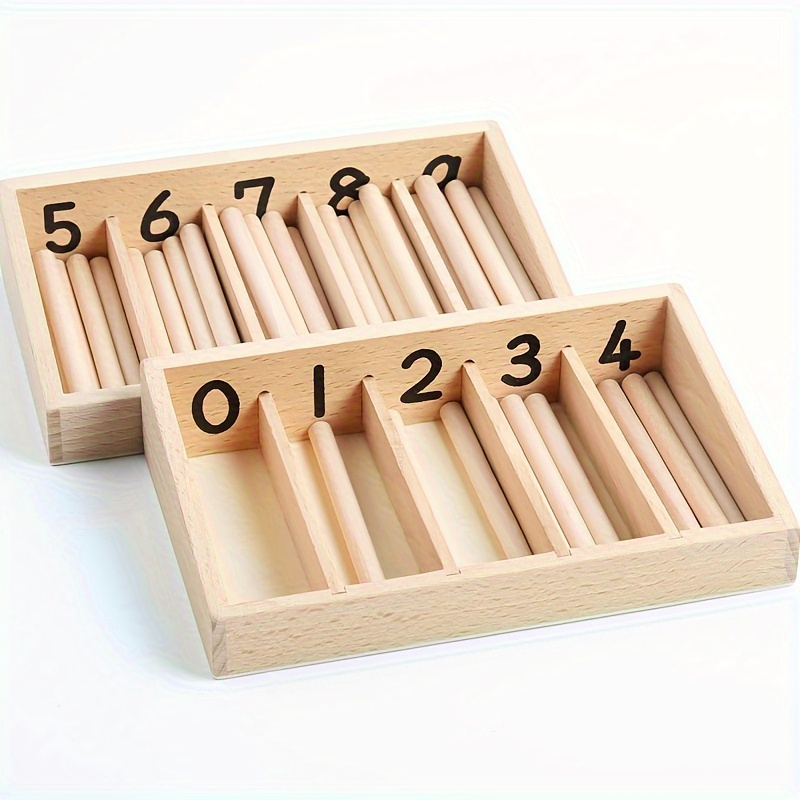
16
Montessori Spindle Box: The Benefits and Uses
Step into the world of Montessori education and discover the innovative and effective teaching tool known as the Montessori spindle box. This unique apparatus, designed to help children grasp the concept of quantity and numeral correspondence, has been a staple in Montessori classrooms for decades. Join us as we explore the origins, benefits, and practical applications of the Montessori spindle box, and unlock the potential for a more hands-on and engaging learning experience for young learners.
Table of Contents
- Introduction
- Understanding the Montessori Spindle Box
- Benefits of Using the Montessori Spindle Box
- How to Introduce the Spindle Box to Children
- Developing Math Skills with the Montessori Spindle Box
- Tips for Choosing the Right Montessori Spindle Box
- Q&A
- Concluding Remarks
Introduction
Welcome to our comprehensive guide on the Montessori spindle box, a fantastic tool for early childhood education. Developed by Dr. Maria Montessori, the spindle box is a valuable resource in the Montessori method, which emphasizes hands-on learning and self-discovery. In this post, we will explore the benefits of the spindle box, how it works, and how to use it effectively in a Montessori classroom or home environment. Whether you’re a parent, teacher, or someone interested in early childhood education, this guide will provide you with the knowledge and insights you need to make the most of the spindle box.
Dr. Maria Montessori, an Italian physician and educator, revolutionized the field of early childhood education with her innovative approach to teaching. Central to her method is the belief that children learn best through direct experience and exploration, rather than traditional instruction. The Montessori spindle box aligns with this philosophy by allowing children to manipulate and interact with physical objects to develop a deep understanding of mathematical concepts. Through the use of the spindle box, children can grasp abstract ideas such as numerical order, sequencing, and addition in a concrete and tangible way.
- Learn about the history and purpose of the Montessori spindle box
- Discover the benefits of using the spindle box in early childhood education
- Gain practical tips for incorporating the spindle box into your teaching or parenting practice
Understanding the Montessori Spindle Box
The Montessori spindle box is a fundamental tool used in Montessori education to teach children about numbers, counting, and quantity. It consists of a wooden box with ten compartments and a set of ten spindles. The purpose of the spindle box is to help children understand the concept of numbers and quantities through hands-on, tactile learning.
How the Montessori Spindle Box Works
When using the spindle box, children are first shown how to correctly place the spindles in ascending order in the compartments from left to right. They then match the corresponding number of spindles to the numeral cards provided. This process helps children establish a concrete understanding of the relationship between the numeral (symbol) and the quantity it represents, fostering a strong foundation for mathematical concepts.
The Benefits of Using the Montessori Spindle Box
- Develops numeracy skills in early childhood education
- Promotes fine motor skills through manipulation of the spindles
- Encourages independent learning and problem-solving
- Supports the Montessori approach to education, emphasizing hands-on, experiential learning
| Age Range | Description |
|---|---|
| 2-4 years | Introducing numerals and quantity relationship |
| 4-6 years | Reinforcing number recognition and addition concepts |
Benefits of Using the Montessori Spindle Box
Introducing the Montessori spindle box into your child’s learning environment can have a multitude of benefits that promote cognitive development and a deeper understanding of mathematical concepts. The spindle box is a key tool used in the Montessori method of education, which emphasizes hands-on, individualized learning experiences. Here are some of the key benefits of incorporating the spindle box into your child’s learning routine:
- Concrete Understanding: The spindle box provides a concrete way for children to grasp the concept of quantity and number relationships. By physically manipulating the spindles and placing them in the corresponding compartments, children develop a visual and tactile understanding of numerical concepts.
- Introduction to Numeracy: As children engage with the spindle box, they are introduced to numeracy in a hands-on, interactive way. They begin to recognize the sequence of numbers and internalize the concept of one-to-one correspondence, setting a strong foundation for future mathematical learning.
- Development of Fine Motor Skills: Using the spindle box requires children to carefully grasp and manipulate the spindles, honing their fine motor skills and hand-eye coordination. This physical engagement contributes to overall dexterity and precision in movements.
- Promotion of Independence: The Montessori approach values independence, and the spindle box allows children to work at their own pace and independently explore numerical concepts. This fosters a sense of autonomy and self-reliance in their learning journey.
Overall, the Montessori spindle box serves as a valuable tool for promoting mathematical understanding, fine motor development, and independent learning in young children. By integrating this hands-on learning apparatus into the educational environment, children can gain a solid foundation in numeracy while honing important motor skills, setting the stage for a lifelong love of learning.
How to Introduce the Spindle Box to Children
Introducing the spindle box to children in a Montessori environment can be a rewarding and educational experience. The spindle box is a math material used to teach children about the concept of quantity and the association of number symbols with the quantities they represent. Here are some tips on how to effectively introduce the spindle box to children:
Set up the Environment
Before introducing the spindle box to children, it’s important to set up the environment to ensure a calm and focused space for learning. Arrange the spindle box on a low shelf where it is easily accessible to the children. Ensure that there is ample space for the children to work with the materials and that the area is well-lit and free from distractions.
Demonstrate Proper Usage
Once the environment is prepared, demonstrate the proper usage of the spindle box to the children. Show them how to select the appropriate number cards and place the correct quantity of spindles in each compartment. Encourage them to observe as you demonstrate and ask them open-ended questions to gauge their understanding of the concept.
Allow for Independent Work
After the initial demonstration, allow the children to work independently with the spindle box. Encourage them to explore the materials at their own pace and use them to create their own combinations of numbers and quantities. Provide guidance and support as needed, but allow the children to take ownership of their learning experience.
Reinforce Learning Through Activities
Once the children have become familiar with the spindle box, reinforce their learning through fun and engaging activities. Create games that involve matching number cards to quantities, or ask the children to sort the spindles into different compartments based on specific criteria. These activities will not only reinforce their understanding of the concept but also make learning math enjoyable and interactive.
Developing Math Skills with the Montessori Spindle Box
The Montessori spindle box is a valuable tool for developing math skills in young children. This hands-on learning apparatus helps children understand the concept of quantity, learn to count, and grasp the idea of number order. The spindle box is a fundamental material in a Montessori classroom, and its benefits extend far beyond the traditional methods of teaching math.
Understanding Quantity
The spindle box consists of a wooden tray with ten compartments and a set of wooden spindles. Each compartment is numbered from 0 to 9, and the spindles are used to represent the corresponding quantity. Children can physically see and feel the difference in quantity as they move the spindles from one compartment to another. This tactile experience helps them comprehend the abstract concept of numbers and quantity in a concrete way. By using the spindle box, children can develop a solid foundation in understanding number values and quantities, which is essential for their future math learning.
Learning to Count
One of the primary purposes of the spindle box is to help children practice counting. As they move the spindles from one compartment to another, they can verbally count out loud to reinforce the concept of counting. This hands-on approach to counting not only makes the learning process more enjoyable but also enhances their understanding of number sequencing and the relationship between numbers. Children can learn to count from 0 to 9 and understand the numerical progression in a visual and interactive manner.
Grasping the Idea of Number Order
Using the spindle box, children can visually see the arrangement of numbers in order within the compartments. This visual representation of number order aids in their understanding of sequence and helps them recognize the numerical pattern. As they manipulate the spindles, they are able to observe the numerical progression and internalize the concept of number order. This hands-on experience allows children to grasp the idea of number order at an early age, setting a solid foundation for more advanced math concepts in the future.
Tips for Choosing the Right Montessori Spindle Box
When it comes to choosing the right Montessori spindle box for your child, there are a few key factors to consider. The spindle box is an essential Montessori material that helps children develop their understanding of numbers and quantity. Here are some tips to help you choose the right spindle box for your child:
- Quality Construction: Look for a spindle box that is well-built and durable. It should be made of high-quality materials that can withstand the rigors of daily use.
- Correct Numbering: Check that the spindle box you choose has the correct numbering system according to the Montessori method. The boxes should be clearly labeled with the appropriate numbers to help your child learn effectively.
- Appropriate Size: Consider the size of the spindle box in relation to your child’s age and developmental stage. The box should be easy for your child to handle and manipulate.
- Engaging Design: Look for a spindle box with a design that captures your child’s attention and makes learning fun. Bright colors, interesting shapes, and engaging details can all contribute to a positive learning experience.
By keeping these tips in mind, you can select the perfect Montessori spindle box for your child and support their learning and development in a meaningful way.
Q&A
Q: What is a Montessori spindle box?
A: A Montessori spindle box is a learning tool used in Montessori education to help children understand and grasp the concept of numbers and quantity.
Q: How does a spindle box work?
A: The spindle box consists of a wooden box with compartments and a set of wooden spindles. The child places the appropriate number of spindles into each compartment according to the numerical cues provided.
Q: What age group is the Montessori spindle box designed for?
A: The spindle box is designed for children in the early stages of preschool and kindergarten, typically between the ages of 3 to 6 years old.
Q: What are the benefits of using a spindle box in early childhood education?
A: The spindle box helps children develop their fine motor skills, understand the concept of quantity and numeracy, and promote independent learning and concentration.
Q: Can the Montessori spindle box be used at home?
A: Yes, the spindle box can be used at home to supplement early math education and support a child’s learning development.
Q: What are some variations of the spindle box?
A: There are various adaptations of the spindle box, including color-coded spindles, different compartment designs, and digital versions for online learning.
Q: What should parents and educators consider when introducing the spindle box to children?
A: It’s important to provide guidance and support as children explore the spindle box, and to create a supportive and engaging learning environment to encourage their curiosity and understanding of numbers and quantity.
Concluding Remarks
In conclusion, the Montessori spindle box is a valuable tool for teaching children the concepts of numbers, counting, and fine motor skills. Its interactive and hands-on approach fosters a deep understanding of mathematical concepts at an early age, laying the foundation for a lifelong love of learning. By incorporating the spindle box into a Montessori-inspired education, parents and educators can cultivate a rich and engaging learning environment for children to thrive in. With its simple design and powerful impact, the spindle box is a treasure in the world of early childhood education. Embrace the Montessori approach and watch your child’s mathematical skills flourish.

